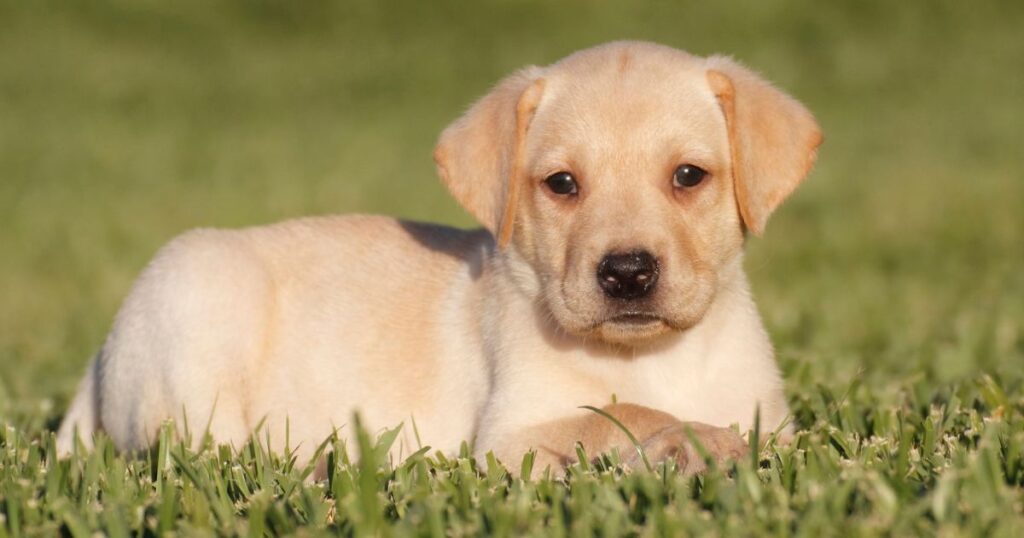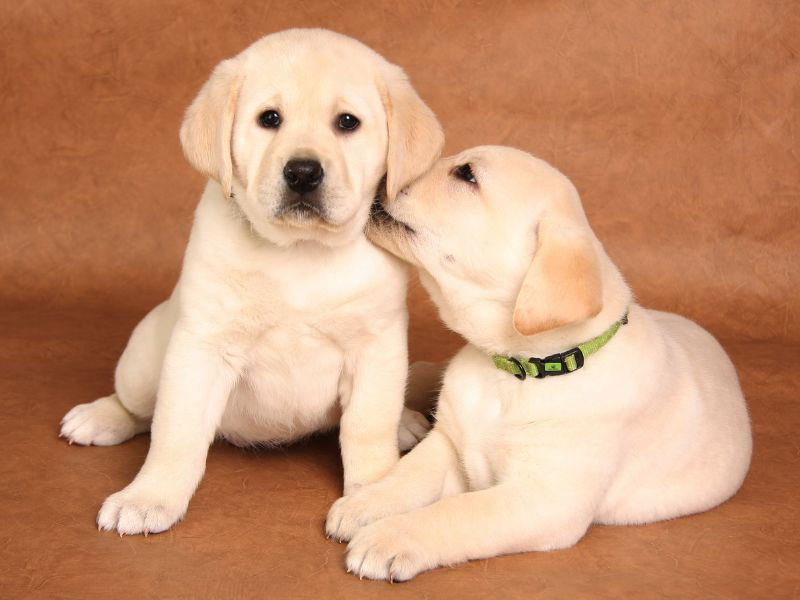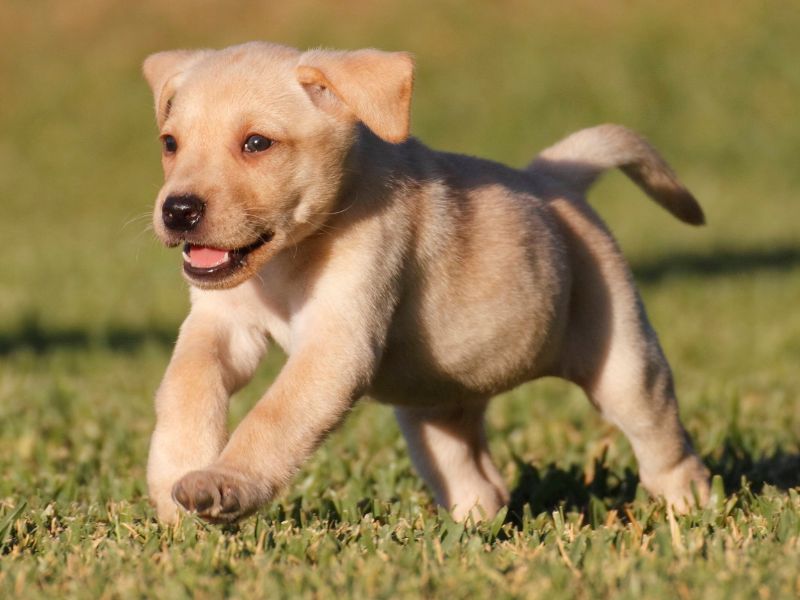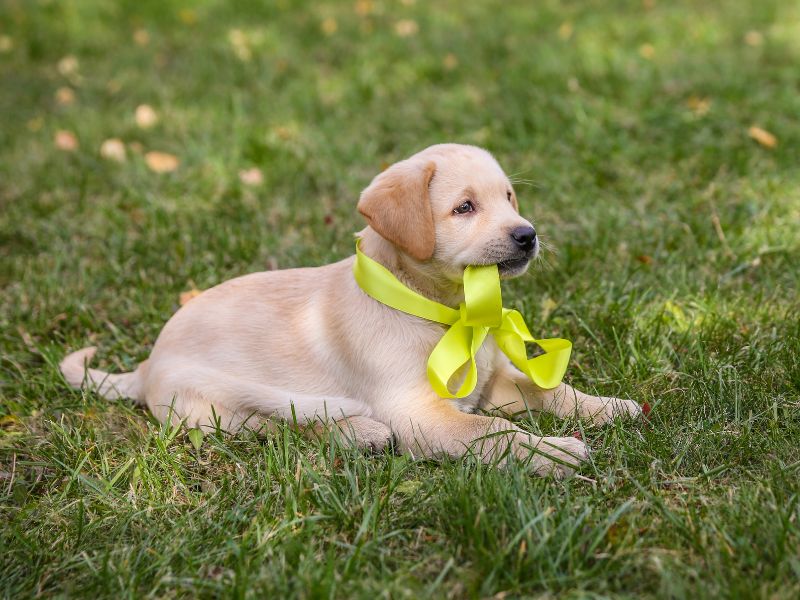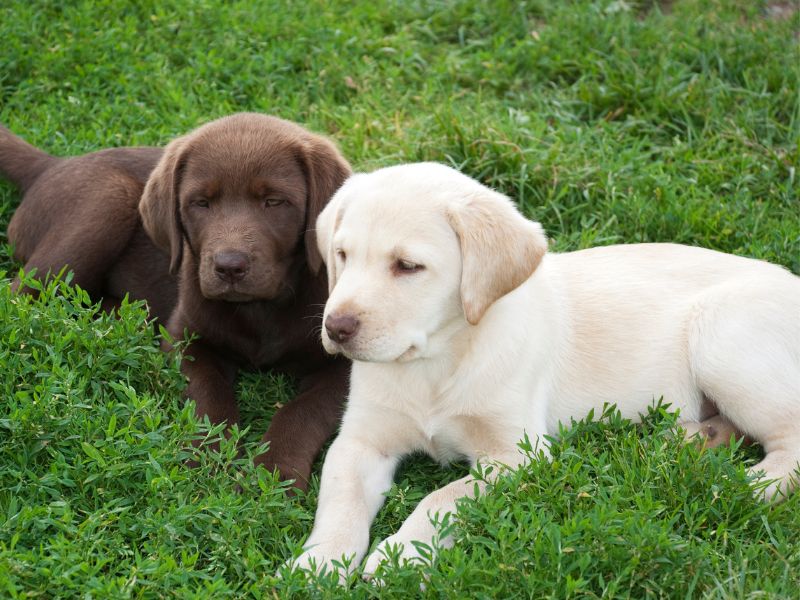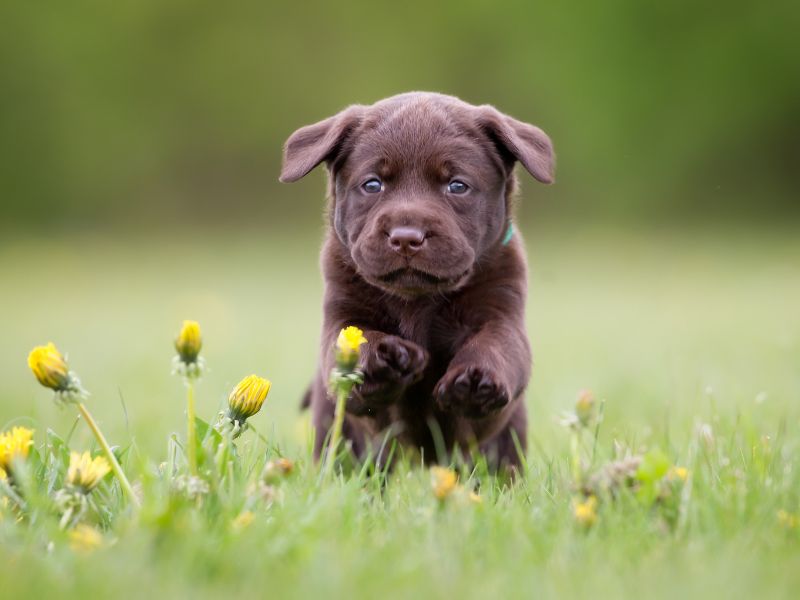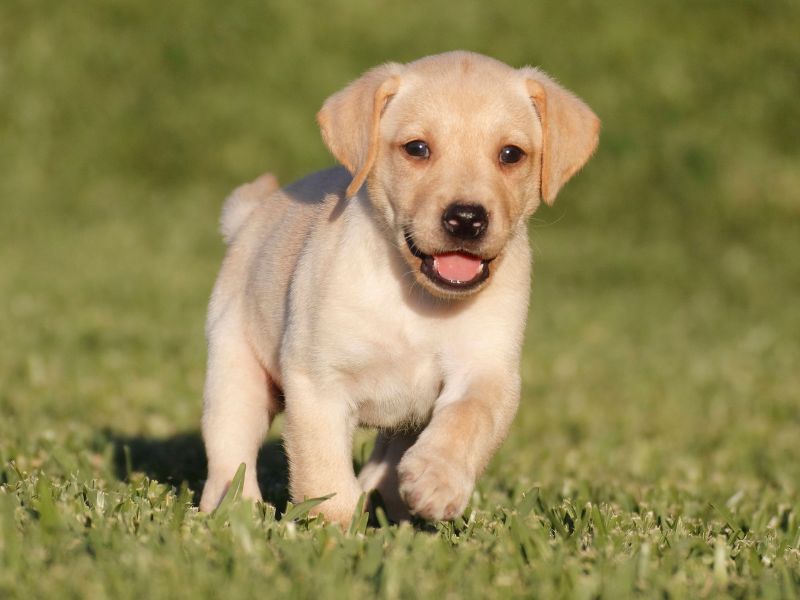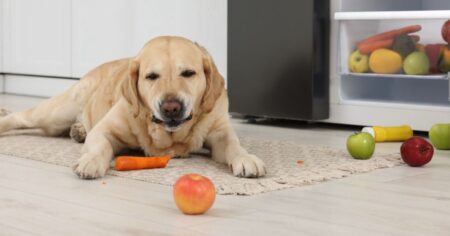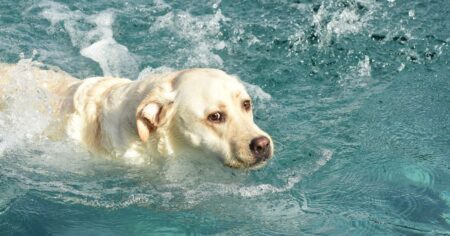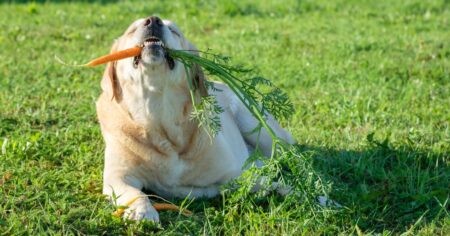Labrador puppies are known for their playful and loyal nature, making them a popular choice for many families and individuals seeking a canine companion. Ensuring the happiness and well-being of a Labrador puppy can contribute to their development into a well-adjusted, healthy adult dog. This article will provide ten essential tips for raising a happy and content Labrador puppy, while taking into consideration their unique requirements and behaviors.
A critical factor in a puppy’s happiness is ensuring they feel safe and secure in their new environment. Providing them with a designated space, such as a den or crate, can help satisfy their natural instinct for a secure resting area. It is also important to create positive associations with people, other animals, and various situations during the early months of a Labrador puppy’s life. This will help them grow into a well-socialized, confident, and happy adult dog.
In addition to addressing these emotional and behavioral aspects, offering proper physical care through a balanced diet, regular exercise, and appropriate healthcare is essential for a puppy’s overall happiness and well-being. Stay tuned for the ten specific tips that will guide you in raising a happy and healthy Labrador puppy.
Happiness Is A Balancing Act
A happy Labrador puppy is one that feels safe and secure in its environment. In order to achieve this balance, it’s essential for owners to provide both physical and emotional support alongside proper training. Keeping a Labrador puppy content involves finding harmony between playtime, socialization, and structure.
One of the first steps in maintaining a happy Labrador puppy is to establish a routine. Providing consistency in daily activities helps puppies feel secure and understand what to expect. This routine should include regular feeding times, designated playtime, and consistent training sessions.
It’s crucial for Labrador puppies to have opportunities for mental and physical stimulation throughout the day. Offering toys that engage their minds, such as puzzle toys or chew toys, can help keep them content and focused. Additionally, daily exercise through walks, runs, or fetch sessions in the park are essential for a healthy, happy puppy.
Socialization is another vital aspect of balancing happiness for a Labrador puppy. Introducing your puppy to new environments, people, and other dogs helps build confidence and prevents fearfulness in later stages of life. Early socialization includes everything from encountering simple sights and sounds around the home, to attending puppy classes for group-based learning and interaction.
Lastly, a Labrador puppy’s happiness hinges on a strong bond with their owner. This bond is formed through positive reinforcement, gentle training, and affection. By employing praise and rewards, rather than punishment, you ensure that your puppy learns to trust and respect you, and feels secure in your presence. This connection is the foundation of a lifelong, rewarding relationship with your loyal Labrador.
Remember, keeping a Labrador puppy happy is not about indulging every whim or allowing chaos to reign. Rather, it’s about providing the emotional support, structure, and guidance needed to create a well-adjusted, content puppy ready for the world.
1. Safe Places = Happy Puppies
Labrador puppies are naturally inclined to seek the company of their caregivers, as it provides them with a sense of safety and comfort. Therefore, ensuring that your puppy has a dedicated safe space to retreat to when they need some alone time is essential for their well-being.
A designated den-like area, such as a crate or a cozy corner in your home, can provide your puppy with a sense of security. This area should be free from distractions and excessive noise, allowing your puppy to rest and recharge comfortably. When introducing your Labrador puppy to this safe space, it’s important to make it inviting by adding a soft blanket or bed and some favorite toys.
Remember to also establish boundaries by placing baby gates or barriers to prevent your puppy from wandering into potentially hazardous areas. Taking these steps to create a safe environment will help your Labrador puppy feel more at ease in their new home.
In addition to providing a safe space indoors, it’s also important to ensure your puppy’s outdoor environment is secure. A fenced yard or outdoor playpen can prevent your Labrador puppy from wandering off and getting lost or hurt. Just like their indoor area, outdoor spaces should also have plenty of toys and opportunities for exploration and play, helping to stimulate your puppy’s mind and satisfy their innate curiosity.
In summary, creating both indoor and outdoor safe spaces for your Labrador puppy can greatly contribute to their overall happiness and well-being. By providing them with a secure environment to rest and explore, you are setting the foundation for a healthy, happy, and well-adjusted dog.
2. Happy Labrador Puppies Have A Calm Environment
Creating a calm environment for a Labrador puppy is essential in ensuring their happiness and well-being. Puppies are sensitive to the atmosphere around them and often mirror the emotions and energy levels of the people and other animals in their surroundings. When people in the household are excited or stressed, it’s not uncommon for puppies to become over-excited and potentially develop undesirable behaviors, such as excessive biting.
One key aspect of maintaining a calm environment is the establishment of a routine. Puppies thrive on consistency and knowing what to expect. This involves setting regular mealtimes, playtimes, and rest periods, as well as sticking to a consistent schedule for potty training. A well-structured routine helps build a sense of security and predictability for the puppy, making them feel more at ease.
In addition to establishing routines, it’s important for the puppy to have a dedicated safe space within the household. This can be achieved through the use of a crate or a designated puppy pen. Providing a comfortable and secure area for the puppy to retreat to when they need downtime or rest can immensely contribute to their overall calmness.
Moreover, exposing the puppy to various stimuli in a controlled manner can go a long way in building their confidence and keeping them calm. This can include introducing the pup to different sounds, textures, and experiences, but in a gentle and gradual manner. Avoid exposing the puppy to loud noises, large crowds, or hectic environments that may overwhelm them, as this can contribute to anxiety.
Finally, teaching the puppy basic obedience commands and incorporating positive reinforcement can significantly contribute to a calmer environment. Rewarding good behavior with affection, praise, or treats, and redirecting negative behavior, helps the puppy understand boundaries and expectations, while maintaining a friendly and supportive atmosphere.
By adhering to these guidelines, you can create a calm environment that fosters happiness in your Labrador puppy, allowing them to grow into a well-adjusted and confident adult dog.
3. Outdoor Time To Potty
A crucial aspect of raising a happy and well-adjusted Labrador puppy is establishing a consistent and effective outdoor potty routine. To help your puppy get used to their new environment and become comfortable with going outside for potty breaks, follow these tips:
- Establish a schedule: Set a daily routine that includes designated potty times, such as after meals, playtime, and before bedtime. This helps your Labrador puppy understand when it’s time to go outside and promotes a sense of security in their daily life.
- Designate a specific potty spot: Choose a consistent area in your yard or nearby space for your puppy to use for potty breaks. This will help them associate the area with going to the bathroom and make it more likely that they’ll successfully relieve themselves during their outdoor potty trips.
- Use verbal cues: When taking your puppy to their potty spot, use a keyword such as “go potty” to encourage them to do their business. By consistently using the same cue, your Labrador puppy will learn to associate the word with the action and become more reliable during their bathroom breaks.
- Keep it brief and focused: Take your puppy outside on a leash to prevent distractions, and avoid playing or engaging in other activities during potty time. This will teach your puppy the purpose of their outdoor trips and help them concentrate on their task.
- Offer praise and rewards: After your Labrador puppy successfully goes potty outside, offer immediate praise and a small treat as a reward. This positive reinforcement will motivate them to continue behaving well during their potty breaks and reinforce the connection between going outside and positive experiences.
- Be patient during wet weather: Labradors are known for their love of water, but they may be hesitant to go potty in wet conditions. If your puppy is reluctant to go outside during rainy days, use a large umbrella or a doggie raincoat to make their potty breaks more comfortable. With a little patience and encouragement, your puppy will learn to adapt to various weather conditions.
By following these tips and maintaining a consistent and supportive potty routine, your Labrador puppy will quickly learn how to relieve themselves outdoors, resulting in a happier, healthier, and more well-adjusted pet. Remember that consistency and patience are key when it comes to successful potty training for your Labrador puppy.
4. Restricted Access
A significant factor that contributes to a happy Labrador puppy is providing them with restricted access to specific areas of your home. Doing so not only keeps your puppy safe, but also helps in the process of house training and preventing unwanted behaviors.
Start by designating a safe and comfortable space for your puppy where they can relax and sleep. A crate or a smaller, confined area, preferably near you, should be suitable for this purpose. Puppies often feel safe in dens because it mimics their natural environment with their littermates.
Establishing boundaries in your home is essential, especially during the first few weeks. It can be tempting to let your pup explore every corner of the house, but doing so may lead to accidents and chewing on inappropriate items. Gradually increase your Labrador puppy’s access to areas within the home as they become more comfortable and better trained.
To make these boundaries clear and easy for your puppy to understand, use physical barriers such as pet gates or doors. Additionally, provide them with consistent training, using clear cues and positive reinforcement, which helps them learn and adapt to their environment more quickly.
Maintaining a clean and organized home can be helpful in keeping your Labrador puppy content within restricted areas. Removing small objects, dangerous substances, and distractions from the limited-access area ensures that your little companion remains safe and happy.
In conclusion, offering your Labrador puppy a restricted and controlled environment sets them up for success by ensuring their safety and happiness while assisting in their training and adaptation to your home.
5. The Right Feeding Routines
A proper feeding routine is essential for keeping your Labrador puppy happy and healthy. Establishing a consistent schedule will help your puppy feel secure and make house training easier. Here are a few simple guidelines to follow for an effective feeding routine.
Start by offering your Labrador puppy three measured meals per day, ideally at the same times every day. You may choose to serve breakfast at 7 a.m., lunch at noon, and dinner at 5 p.m. Providing the last meal of the day around 5 p.m. gives your puppy ample time to digest their food and complete any necessary eliminations before bedtime.
In the first few weeks of your puppy’s life, they will rely on their mother’s milk for sustenance and immune support. As your puppy transitions to solid food, opt for high-quality puppy kibble specifically formulated for Labradors. Many kibbles are designed to cater to Labrador puppies’ nutritional needs, so you shouldn’t struggle to find an appropriate product at your local pet store.
During the first couple of months, four feedings a day may be necessary. However, by the time your Labrador reaches 9-10 weeks for large breeds, or 12-13 weeks for small breeds, you can gradually decrease the frequency to three meals a day with unmoistened dry food.
When determining the proper portion sizes, consult your veterinarian or refer to the feeding chart provided by the kibble manufacturer. Keep in mind that the needs of each puppy may vary, so it’s essential to monitor their weight and growth regularly. Adjust portion sizes as needed to prevent weight gain or loss, and ensure your puppy receives adequate nutrients for their specific age and size.
In addition to nurturing your puppy with nutritious food, always provide them with fresh water to keep them hydrated throughout the day. Maintaining a balanced diet and a consistent feeding routine is key to ensuring the overall happiness and well-being of your Labrador puppy.
Get Pippa’s Training Tips!
If you’re looking for reliable and practical training tips for your Labrador puppy, Pippa Mattinson’s expertise is exactly what you need. With over forty years of experience working with dogs, Pippa is well-versed in Labrador-specific training. Her wisdom is available through various sources like The Labrador Site, dogsnet.com, and Labrador Secrets.
Pippa offers valuable tips on maintaining a calm and stable environment for your Labrador puppy.
Some of her key points include:
- Providing a safe space for puppies, having a den or a resting area where they can feel secure
- Working on improving your training skills and understanding your dog better
- Focusing on both general and specific aspects of training, such as heel work, recall, and avoiding common mistakes
Pippa’s training resources do not only cover the aspects of training your dog, but also help motivate both yourself and your dog for a successful and enjoyable experience. Moreover, her tips are completely free, offering an easily accessible knowledge base for Labrador puppy owners.
By following Pippa Mattinson’s guidance and patiently implementing her training tips, Labrador puppy owners can ensure their puppies grow and develop into happy, well-trained, and well-adjusted dogs.
6. Socialization Builds A Happy Labrador Puppy
Socialization is crucial in ensuring that your Labrador puppy grows up to be a happy and well-adjusted adult dog. By exposing your puppy to various environments, people, and situations from an early age, you can help them develop confidence and adaptability.
The process should begin with the breeder and continue with you, the owner. Set a goal to introduce your puppy to a variety of places, people, vehicles, and objects before they reach three months old. This is an essential part of building their social skills and familiarizing them with the world they’ll encounter as an adult dog.
It’s important to expose your Labrador puppy to different people, including those of varying ages, sizes, and appearances. This exposure will help your puppy understand that strangers are not to be feared. Remember to keep these interactions positive and safe; ask people to approach calmly and offer treats, praise, or pets as rewards for your puppy’s calm behavior.
Visiting a range of environments will further aid your puppy’s socialization. Take them to busy sidewalks, markets, playgrounds, and parks to accustom them to various sights, sounds, and smells. Again, make these experiences enjoyable by praising and rewarding your puppy for remaining calm and well-behaved.
To facilitate safe encounters with other dogs, enroll your Labrador puppy in well-run puppy classes. These classes provide a controlled environment for your pup to socialize with other dogs their age while learning basic obedience. Moreover, interacting with other dogs can help teach your puppy essential communication and play skills.
In summary, socialization is a vital component of raising a happy Labrador puppy. Exposing your pup to diverse experiences, people, and environments will help them become a confident, well-adjusted adult dog, ensuring a smoother and more enjoyable life for both you and your furry friend.
7. Positive Reinforcement Leads To Happiness!
A happy Labrador puppy is one that experiences a consistent and loving environment, and one of the most effective ways to accomplish that is through positive reinforcement training. This method uses rewards, praise, and encouragement to teach puppies desired behaviors, ultimately leading to a strong and beneficial bond between the owner and the puppy.
Incorporating positive reinforcement training into a Labrador puppy’s daily routine can truly improve their overall happiness. By rewarding good behavior with treats, praise, or toys, puppies quickly learn that these actions yield positive results. This helps instill a sense of confidence within the puppy, which is essential for their overall well-being and happiness.
Consistency is crucial in positive reinforcement training. Puppies thrive on familiar patterns, so establish a routine that includes regular feeding, playtime, and training sessions. This structure will help puppies feel secure and understand what is expected of them throughout the day.
To successfully implement positive reinforcement training, remember to:
- Reward good behavior immediately to ensure that the puppy associates the positive reinforcement with the specific behavior.
- Be patient and consistent with the rewards, as it takes time and repetition for puppies to learn the desired actions.
- Engage in regular training sessions to maintain a routine and reinforce positive behaviors.
By following these tips and maintaining a friendly, nurturing approach, Labrador puppies are more likely to feel content and happy in their environment. Positive reinforcement training not only leads to well-behaved puppies but also strengthens the bond between owners and their furry companions.
8. Learn To Be Happy Alone
One crucial aspect of raising a happy Labrador puppy is teaching them to feel secure and content when they’re alone. Puppies naturally enjoy being close to their human companions, so it might be a challenge for them to transition into enjoying their alone time. However, incorporating this lesson into their upbringing will not only provide them with valuable independence, but also contribute to important training milestones.
A good starting point is by creating a safe and cozy space for your puppy where they can feel secure when they’re on their own. This could be a crate, a designated corner in your home, or even the whelping box they were born in. Make the area comfortable with their favorite toys, a soft bed, and maybe even a blanket that smells like you for added comfort.
Gradually start to introduce “alone time” into your Labrador puppy’s daily routine. You can do this by putting them in their designated space while you’re still at home. Puppies often nap throughout the day, so their nap time is an excellent opportunity to practice their alone time. Place their crate or space in a separate room with less activity, dim the lights, and even play some calming music to set the mood for relaxation.
Be mindful of your puppy’s reaction to these alone time sessions. Slowly increase the duration of their alone time, but also remember to give them plenty of love and attention when you’re together. With consistency and patience, your Labrador puppy will soon learn to be confident and happy when they’re alone, leading to a well-adjusted adult dog.
9. Time Off The Leash!
Allowing your Labrador puppy some time off the leash is essential for their happiness and overall well-being. Not only does it provide them with mental stimulation, but it also allows them to explore their surroundings and engage in physical exercise. Here are a few tips to help you ensure a safe and enjoyable off-leash experience for your puppy.
Training is Key
Before allowing your puppy off the leash, it’s crucial to have a solid foundation of training in place. Start by teaching your dog basic commands like “sit,” “stay,” and “come.” Clicker training can be particularly helpful for this, as it helps reinforce positive behaviors quickly and effectively. It’s also essential to train your puppy to walk on a loose leash and to heel both on and off the leash. A reliable recall and an emergency recall are vital for ensuring your puppy’s safety when off-leash.
Choose the Right Environment
Finding a secure and appropriate location for your puppy to be off the leash is crucial. Look for enclosed dog parks, open fields, or trail areas with clear boundaries. Ensure the area is free from potential hazards like fast-moving vehicles, unfriendly animals, or anything else that could pose a risk to your puppy. Always follow local regulations regarding leash usage and off-leash areas.
Be Prepared
When taking your puppy off the leash, make sure to have essential supplies like treats, poo bags, water, and a leash in case you need to regain control quickly. A hands-free “dog training belt” can be a useful tool for storing such items so that you’re always prepared.
Monitor Interactions with Other Dogs
As your Labrador puppy socializes and interacts with other dogs while off the leash, it’s essential to monitor their body language and behavior closely. Learn to recognize signs of stress, fear, or aggression and intervene if necessary. Teaching your puppy appropriate play behavior and working on their socialization skills will ultimately lead to more positive interactions.
Following these tips will help ensure a safe, enjoyable, and beneficial off-leash experience for your Labrador puppy. Remember always to be patient, consistent, and attentive to your puppy’s needs to make the most of their time exploring and enjoying their newfound freedom.
10. Your Happy Labrador Puppy Has Consistency
A happy Labrador puppy thrives in a consistent environment. Establishing a routine early on can help your pup feel safe and secure in their new home. Puppies appreciate knowing what to expect throughout the day and can adjust better when they have a sense of predictability.
Mealtimes, potty breaks, and walks should be scheduled at regular intervals. This not only provides stability for your puppy, but also aids in house training and building a strong bond between you and your playful companion. Consistency in training is also essential, as it helps puppies understand what is expected of them and reinforces good behavior.
It’s important to have consistency within the household, making sure all family members are on board with the routines and rules. This will minimize confusion for your Labrador and decrease the likelihood of behavioral issues stemming from mixed messages. By maintaining a consistent environment, your puppy will develop into a well-adjusted and happy family member.
Remember to consistently shower your Labrador puppy with love and positive reinforcement. Celebrate small wins in their learning process, and remain patient as they navigate their way through puppyhood. With a consistent and friendly environment, your Labrador puppy can happily grow into a loyal and well-behaved companion.

